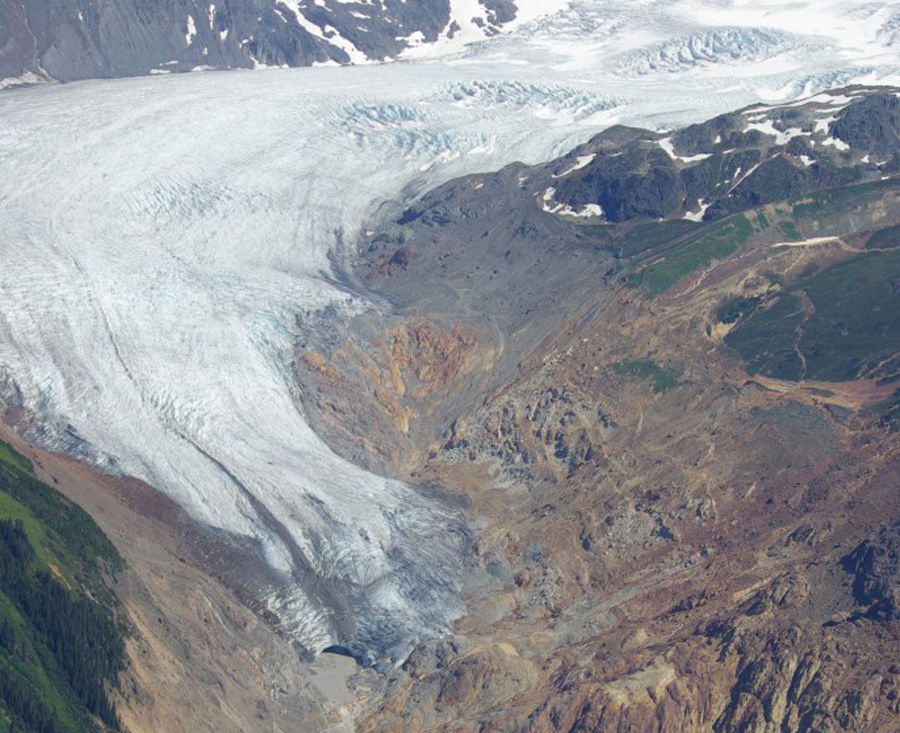
During the final days of 2014 Canada’s minister of the environment gave the green light to Seabridge Gold’s KSM project in northern British Columbia, the world’s largest undeveloped gold-copper project by reserves.
The federal and provincial environmental assessment process took nearly seven-years and KSM was only the second metal mine in five years to receive approval.
A new preliminary economic impact study released by Toronto-based Seabridge on Thursday, the already ambitious project takes another leap forward.
During the first seven years of operation annual gold output would top 1 million ounces
According to a statement, Seabridge now envisages a much larger operation than the one outlined in the preliminary feasibility study released last month and in the process improves both the environmental impact and economics of KSM.
The PEA calls for mill throughput of 170,000 tonnes per day, 40,000 tonnes more than the earlier study which Seabridge says can be done without significant redesign of facilities. Initial capital costs have been increased by just less than 10% to $5.5 billion.
In the PEA the bulk of the operations are moved underground and using the block-cave method Seabridge says it can reduce waste rock by a whopping 81% or 2.4 billion tonnes over the 51 year life of the mine.
By vastly increasing the amount of copper mined life of mine operating costs are now a negative $179 an ounce while all-in costs fall to just $358 an ounce.
Measured and Indicated Mineral Resources at KSM are estimated at 2.9 billion tonnes grading 0.54 grams per tonne gold, 0.21% copper and 2.7 grams per tonne silver which translates into 49.8 million ounces of gold, 13.6 billion pounds of copper and 253 million ounces of silver.
During the first seven years of operation annual gold output would top 1 million ounces and life of mine annual production is estimated at 592,000 ounces of gold, 286,000 pounds of copper and 2.8 million ounces of silver.
Seabridge (TSX:SEA) (NYSE:SA) is worth just over $530 million on the New York Stock Exchange, up 21% in value year to date.
10 Comments
Oredigr
How long does it take to bring a block cave operation like this up to 170,000 tons per day? 5 years? 10 years?
MINING.com Editors
According to Seabridge, the first underground mill feed production from Mitchell, Iron Cap and Kerr comes in years 9, 10 and 4, respectively.
goldfinger
I thought Pascua Lama was still the biggest. They have put $5b into it and have probably have another $5b to go. Of course it might not make money but thats another issue. Its all about ounces on the board.
Backseat Driver
With block cave, the lead time on this project just went to 11 or twelve years minimum (including time in development of 7 years for permitting). Can you comment on funding for the build of this mine – shareholders are going to be quite heavily diluted by the time they get to first pour if it’s all equity.
Altaf
I am not thinking of ounces, costs. The mine life. 51 years!! It is huge. Thinking in terms of human life, it is easily two generations. Nations can plan their future on such projects. Governments should have their own environmental criteria and should not allow two bit activists to even think of getting involved. Its not that gold to be extracted at any cost, but jobless environmentalists should not be allowed to come up with hypothetical doubts. Just imagine a million ounces of gold a year for 50 years in addition to silver, copper and the capacity of the mine to sustain jobs for two generations. Whole new settlements can come up near the mines.
Backseat Driver
The mine life is 51 years which may take 100 years to realize as prices whipsaw around on an annual basis!
marpy
0.54 grams per tonne gold, 0.21% copper and 2.7 grams per tonne silver- These numbers amount to a low grade deposit. Very large but low grade.
Frilly
Claiming negative cost is ignorant and misleading. It comes from crediting minor values against costs. Rather no crediting should be done and all costs should be expressed in terms of gold equivalent ounces (if gold is regarded as the major component).
golddigger69
Back of the envelope calculation shows 1) gross recoverable (90%) ore value = US$30/t; at 170kt/day the $5.5B note is equalled in just under 3 years; but if op costs are 75% of ore value this rises to 10years. Given lead times for item to reach full production this can’t have a positive NPV in the nominal 7yr range of that measurement. The grade is insufficient to carry this project.
JReay
This is called “mining the investors”.